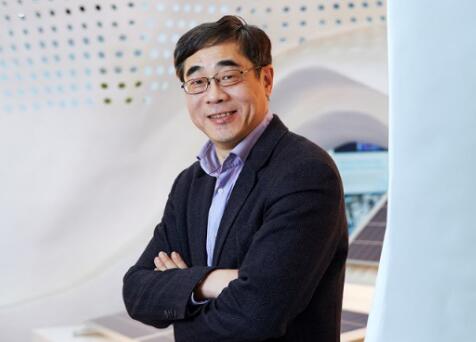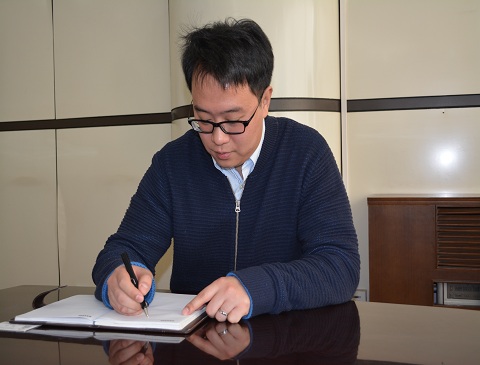Motivation:
Recognizing the increasing market potential for laser edge deletion systems in the thin film industry, Grenzebach expanded its product portfolio with a new innovative laser edge deletion system.
Most edge deletion systems are based on sand blasting or grinding systems.
The Grenzebach system offers in the first instance, a practical solution, avoiding the problems of dust in the cabin and the resulting cleaning and recycling of consumables like sand and toxic materials which give the entire application a bad taste. The industry is constantly seeking alternatives to provide a secure module for the consumer and a healthy and safe workplace for the operators.
Grenzebach's new laser edge deletion system covers all above mentioned thin film technologies. Throughout their market research Grenzebach focused on a solution enabling an excellent ablation of practically all thin film layers and obtaining the requested resistivity. The mandatory machine safety and MAC - values ( ) have also been taken into account.
Basic information concerning Grenzebach's Laser Edge Deletion System:
During the concept phase the focus of the R&D engineers was concentrated on the flexibility of the size range and the reduction of floor space.
For these reasons the system was designed with a vertical conveying system that guides the substrate in lengthwise through the LED system. The laser head is mounted on a vertical running linear axis that moves up and down for the short edge ablation. The ablated thin film material is absorbed by a vacuum system on the opposite side of the laser head and moves synchronously with the laser head axis. The vacuum system comprises all necessary filter systems and efficient vacuum energy resulting in a healthy and safe work environment for the operator. The totally enclosed housing for the system is to Laser class 1 standard ensuring complete safety during the ablating process.
It is a matter of fact that thin film lines have different cycle times, sizes and thin film technologies. Grenzebach is able to demonstrate customized solutions for these varying requirements.
Grenzebach's selection of ROFIN as an experienced supplier for the laser sources was carefully considered. They offer a variety of laser sources from 200W up to 1000W and fundamental know-how based on more than 35 years experience in this field. ROFIN is also a company with a global presence. The varying laser power facilitates customized solutions for different cycle time requirements. Using a thin film production line with less output and inexpensive low power laser will provide an identical result as that of a high speed line and a high performance laser. However, high end laser sources can be split into two laser beams to serve two laser edge deletion systems at one time. This method has a major impact in reducing costs.
ROFIN's Laser source:
For electrical isolation and hermetic sealing of the module, the complete removal of all layers from the edges of fully processed thin film solar cells on glass substrates is imperative. In order to meet production requirements of a typical 40 MW p.a. manufacturing plant, removal rates have to be in the range of 10-50 cm?/s. Here, the laser challenges conventional techniques, like sand blasting and grinding. Since standard TEM00-lasers (like Nd: Vanadate lasers used for scribing) do not provide sufficient ablation rates for this application, especially developed high-power qs-lasers are applied.
Some details concerning the Laser edge deletion system
The process of the laser edge deletion system starts with a vertical conveyor driven by belts. The vertical orientation offers two advantages. Firstly, to run the substrate without any alignment because the substrate edge runs on a timing belt and provides an ideal reference edge for the horizontal edge deletion. The second benefit is the limited space required for a large scale substrate. Here, Grenzebach uses the height of the building instead of floor area.
The two face-to-face and vertically oriented linear systems carry the vacuum system on the front side and the laser head on the back side. The Nd:YAG q-switched - laser source is located outside of the LED system. The connection of the laser source and the LED system is achieved through an optical fiber cable which transmits the diode pumped solid-state laser into the collimating system inside the LED cabin. From there the laser beam is switched into a Galvo - scanner and is subsequently corrected by a flat field lens. The laser beam passes through the substrate and impacts the other side of the very first layer like Molybdenum or the TCO. This method achieves optimal results in terms of ablating the different coatings because only the first layer is heated and as a result the other layers are blasted away towards the vacuum system. The pulsed laser beam itself has a size of a square which is position controlled by the Galvo scanner.
Typical ablation widths are between 0.7 and 1.5 mm at processing speeds of up to 4000 mm/s. As the nature of the process is a shot by shot application the square spot geometry has the advantage, that the overlapping of several pulses is constant across the processing direction. Processing with square homogeneous spots from square fibers allows the system to optimize removal applications. Overlapping of pulses is realized by the displacement of subsequent pulses by less than one spot width. Square pulses have the advantage that the overlap is constant from the center of the spot to the edge. Efficient and homogeneous removal results are thus easily achieved.
On the top side axis the vacuum system is equipped with a stainless steel nozzle located very close to the substrate and directing a perfect stream of suction air towards the filter system. The filter system is divided into three sections. An automatically cleaned coarse filter removes almost 95% of the particles ablated by the LED system. The second filter contains a HEPA filter and removes at least 99.97% of airborne particles with a minimum size of 0.3 micrometers (?m) in diameter. Last but not least an activated carbon filter eliminates gaseous substances. The exchange of the coarse filter bag is contamination free and the operator is prompted to exchange the filter when required.
The entire system has a housing satisfying laser class 1 requirements. Conveyor entrance and exit are monitored by a load lock to keep the environment clean and locked. As an option, Grenzebach offers a process monitoring camera system which visualizes the LED system inside, on the operating desk.
The system PLC offers interfaces with the line control system and also to the MES system. Grenzebach's HMI software PCPANEL2 offers a user friendly operating interface for the LED system. Parameters like ablation width, laser power and pulse overlap are stored in different programs. The operator can select different recipes for different products. Diagnostic messages facilitate operator troubleshooting. Remote access is of course part of the control system and allows our worldwide operating service team to access the system and provide direct support.
- 第九届中国(无锡)国际新能源大会
-
 本届新能源大会以“新城镇、新能源、新生活”为主题,举办2017全球新能源产业峰会及“光伏+”跨界、绿色建筑、分布式市场营销等10场专业论坛,国家能源局新能源和可再生能源司...
本届新能源大会以“新城镇、新能源、新生活”为主题,举办2017全球新能源产业峰会及“光伏+”跨界、绿色建筑、分布式市场营销等10场专业论坛,国家能源局新能源和可再生能源司...














